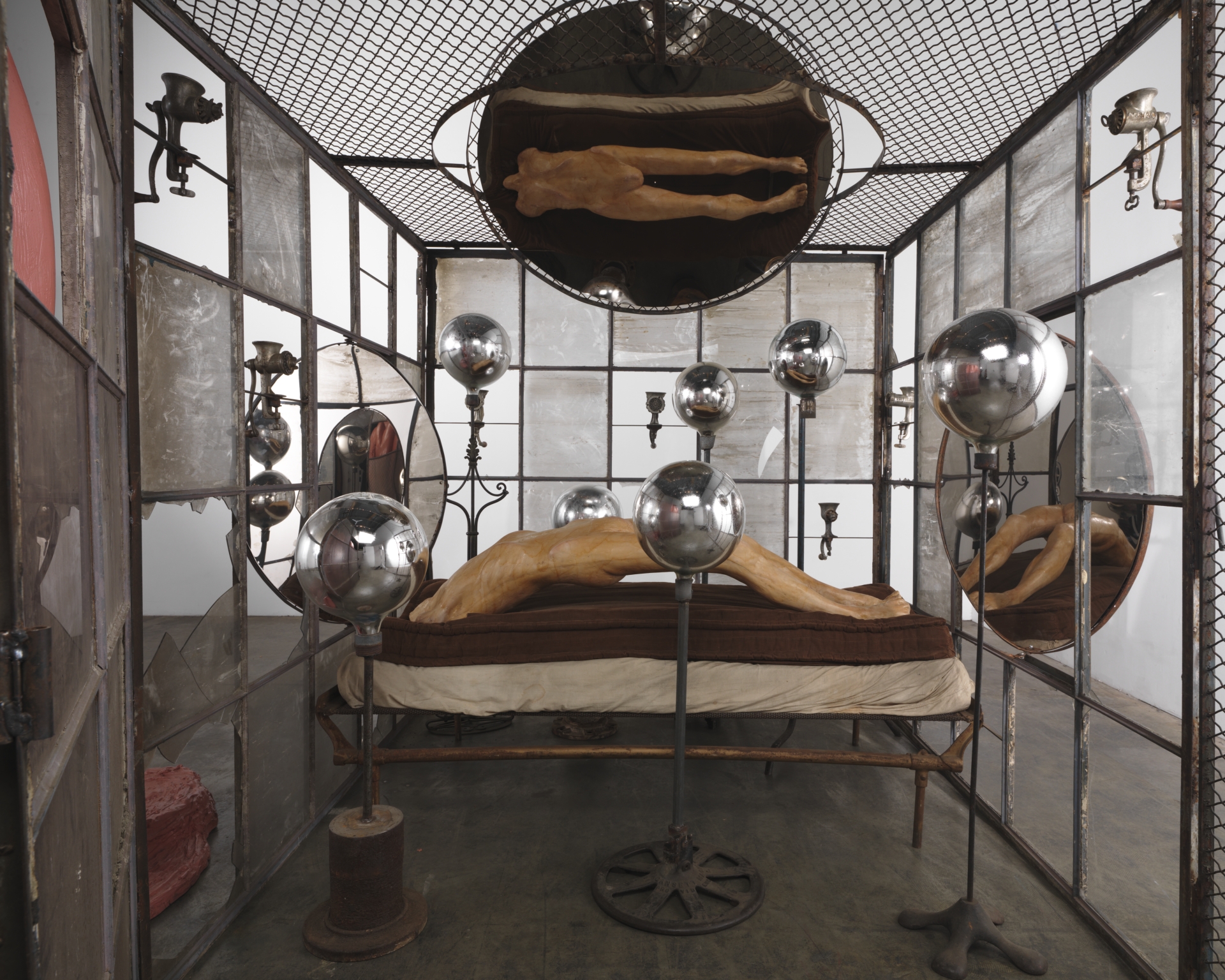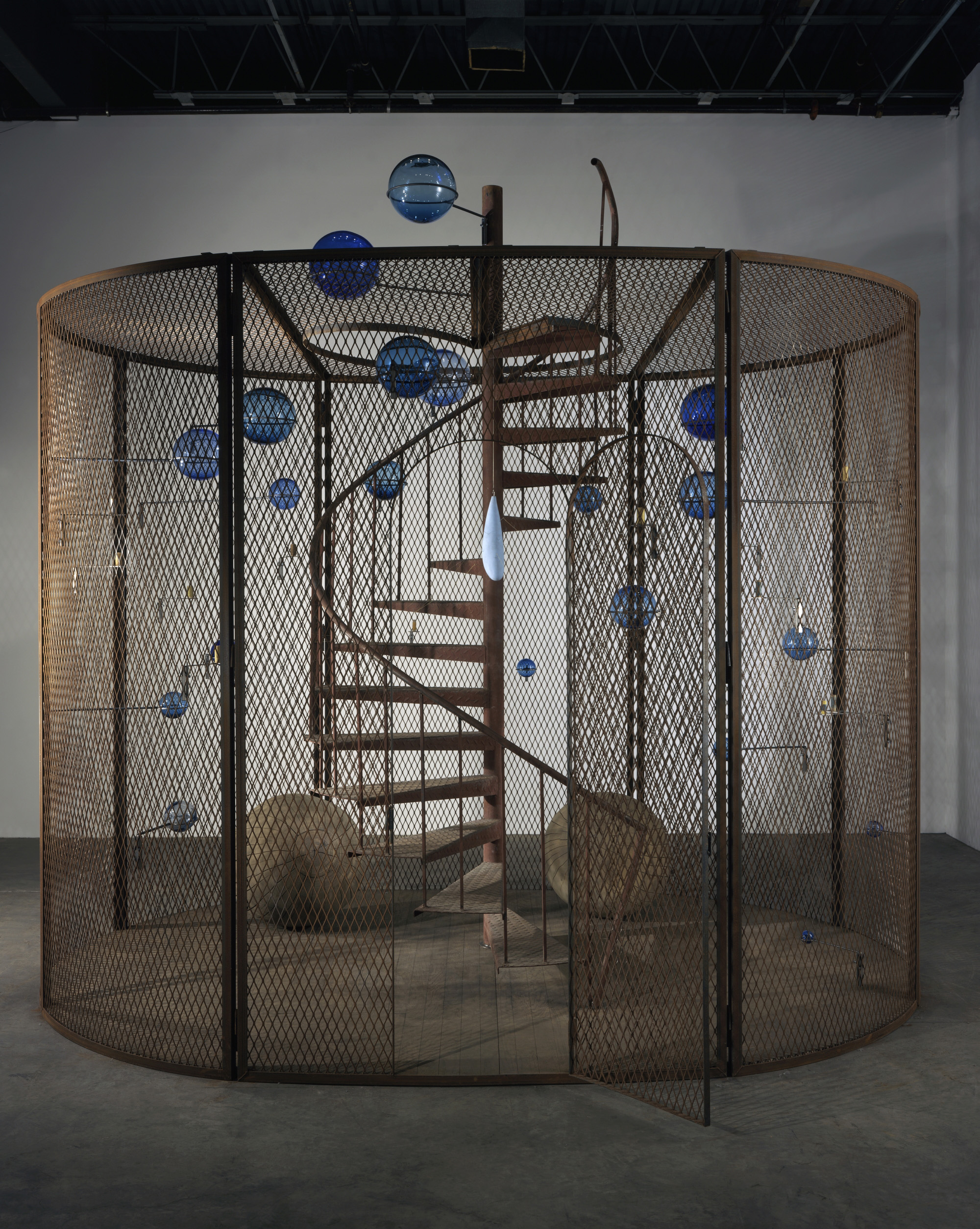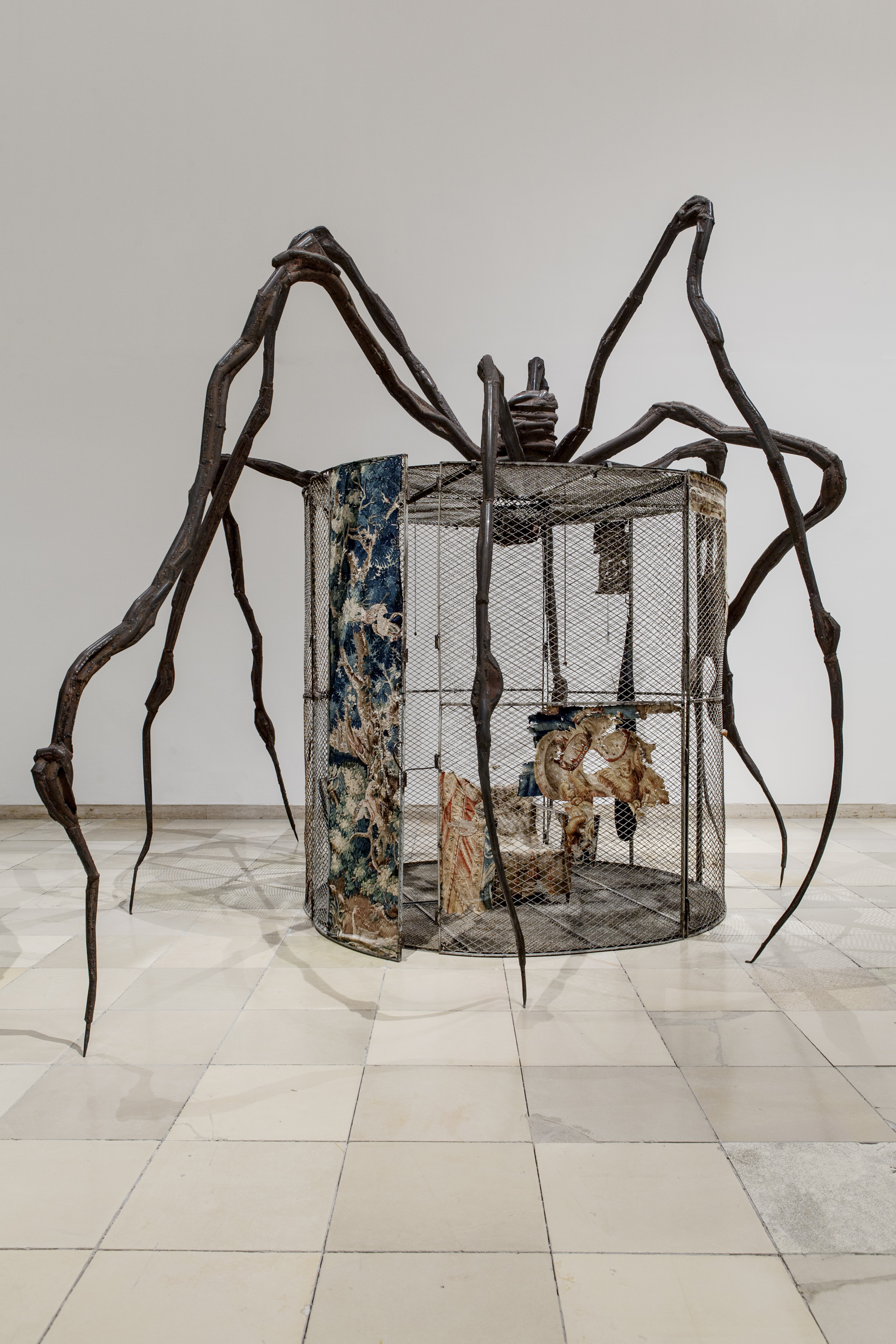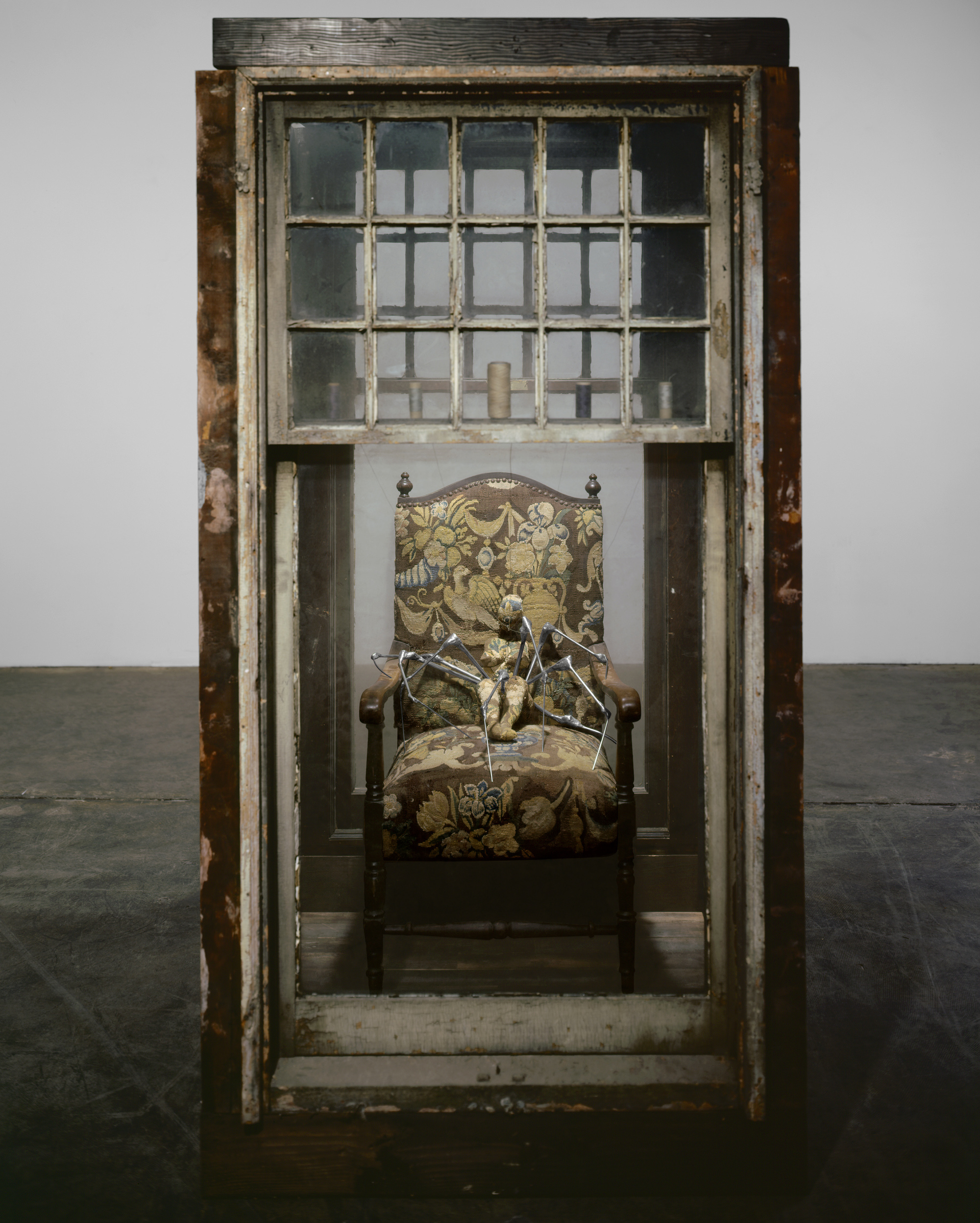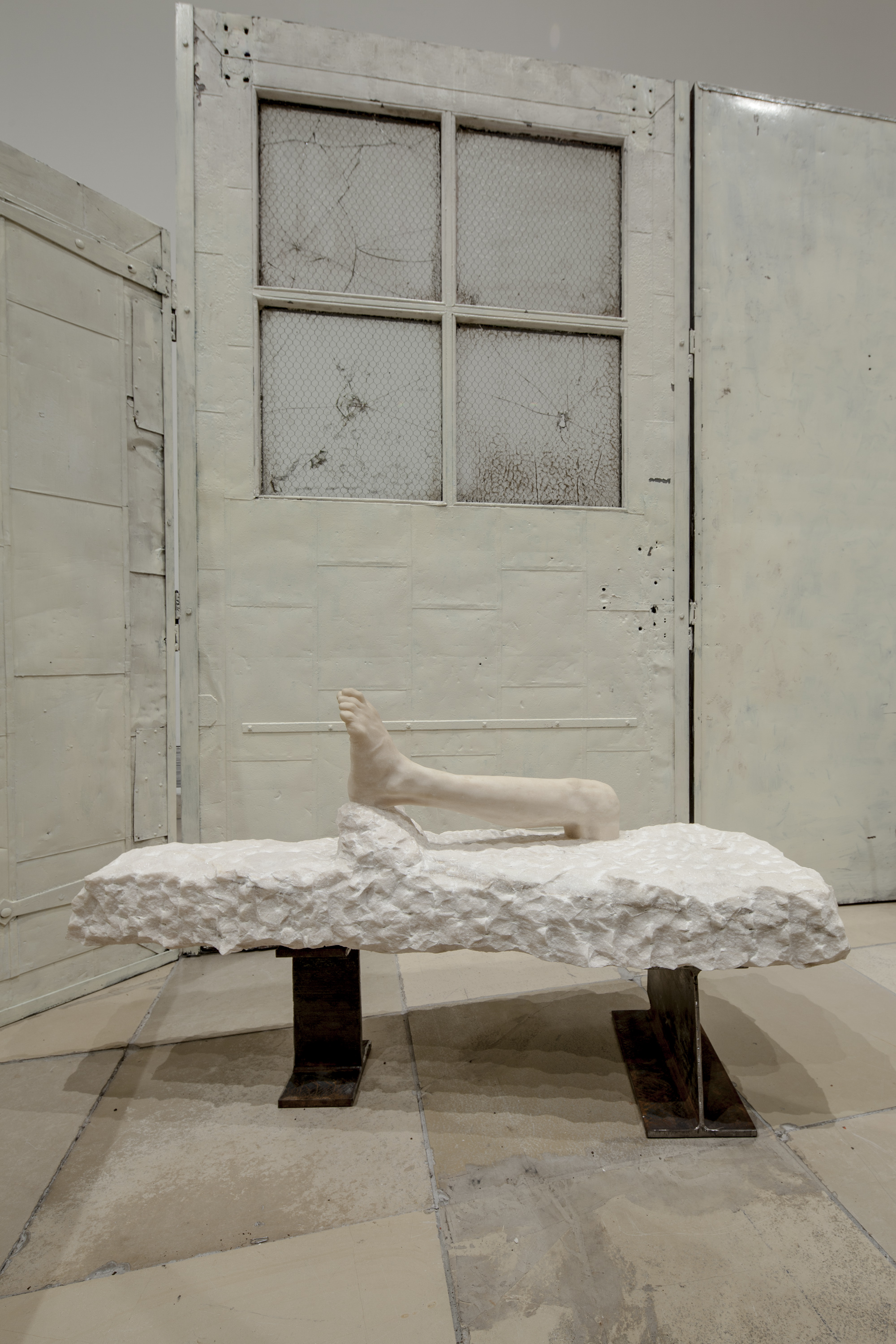I first saw Louise Bourgeois’ work en masse as an angsty teen and, of course, I loved it: Oh the drama! Oh the darkness! Heading to Guggenheim Bilbao to see her most recent, sprawling exhibition—focussed largely around her cells and spanning a vast time period—a little older, a little more informed and (perhaps) a little less angsty, I was pleased to find that it’s still totally acceptable to bond with Bourgeois on an emotional level.
This finding was helped largely by the fact that Bourgeois’ long-time assistant and friend Jerry Gorovoy (whose name my autocorrect fittingly wants to change to ‘groovy’) was present for the opening of Louise Bourgeois: Structures of Existence: The Cells. There is often a tendency with well-known artists, especially once they are late-well-known artists, to speak about their work in overly conceptual tones, removing it one step too far from the person who made it. With Bourgeois’ work in particular, it was a great help to have a personal touch around discussions of her practice, Gorovoy’s input helping to frame the work in a direct manner.
When asked meandering questions about the artist’s intentions, he simply referred us to the artist herself, often bringing conversations back to Bourgeois’ emotional journey, and her personal relationship with the works, quoting such Bourgeois-isms as ‘self-expression is scared and fatal’. So what have we learned?
First of all, that she saw her pieces as ‘more herself than her own physical presence’. The cells—28 in total shown here, containing a mixture of found objects, personal artefacts and symbols from her subconscious—were created to represent various states of mind, and were made for the studio without a gallery context in mind–Gorovoy often in charge of taking her work where it needed to go, the artist herself remaining focussed on her next creation.
References to her feelings about gender were also interesting to learn, seeming as she does to be so focussed on the female experience. While she expressed her experiences of the world through her female perspective, Gorovoy claims it was a sense of universal emotion that she was attempting to tap into, the idea of an individual life with universal feelings. Not that she remained totally outside of discussions around women, deriding the Surrealists for their treatment of women as objects rather than subjects. The wonderfully horrific In and Out also takes a stab at sexism within medical history, a male body shown in the ‘arch of hysteria’, while a looming phallic figure—made of two enormous black balls and a hanging black coat—in Precious Liquids suggests a less than gentle view of the male form.
A surprise in seeing so much of this work together, is that the apparently violent nature of some of the artist’s imagery has come from a place of tenderness rather than brutality. That’s not to say that it doesn’t feel brutal, it does, but you start to delve into the recurring imagery and find that its symbolic roots aren’t too awful. The spider in particular—more Bourgeois than Bourgeois—taps into a collective arachnophobia that seems to have a hold on most of the human population, but it is actually symbolic of her mother, of whom she was incredibly close, who used to spin her own webs in her work mending tapestries. Although this connection is well-known, there are many nuances to be found in seeing the different appearances that the mother makes; sometimes looming, sometimes protecting, and once sitting small in the corner of a cell while a sex act takes place centre stage (suggested to be a reference to her father’s ongoing affair with the family au pair).
Visiting Guggenheim Bilbao and hearing again and again of the various emotions and connections behind each work, it isn’t so much that the suggestions of pain and violence decrease, more that they become symbolic of a human experience that isn’t particularly unusual, that these lie at the heart of THE human experience, and that this hideous pain that is very easy to read into Bourgeois’ work is the usual angst of daily life that is sitting in everyone; it’s dramatic to see it illustrated in this way, but it’s also everyday. And, in a totally alien move, it’s ok to relate to it in a contemporary gallery.
‘Louise Bourgeois: Structures of Existence: The Cells’ is showing at Guggenheim Bilbao until 4 September

